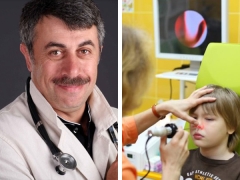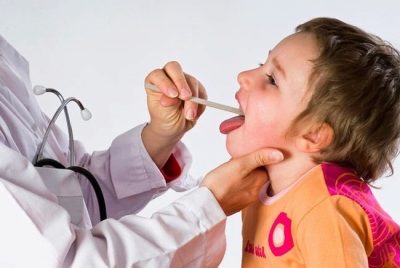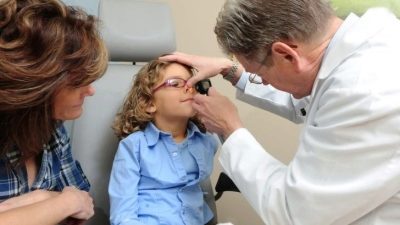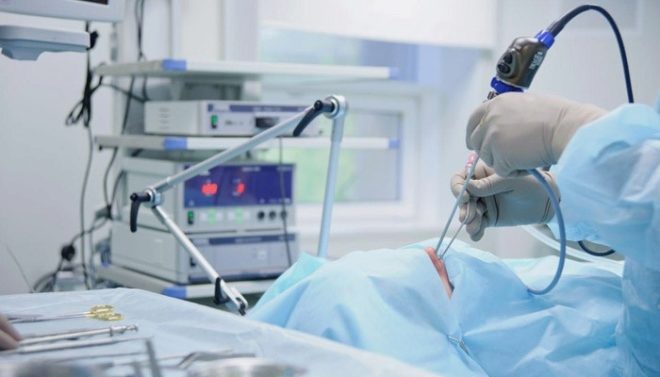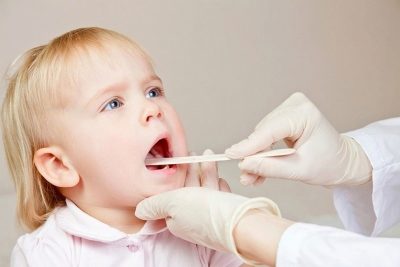Dr. Komarovsky about the treatment of adenoids 3 degrees without surgery
Modern parents often hear the diagnosis of adenoids from pediatricians. And if, at the initial stage of the ailment, the question of the surgical method of treatment is not, as a rule, generally, then this cannot be said about adenoids of the third degree.
Moms and dads, whom the doctor issued a disappointing verdict and recommended operative treatment, are beginning to desperately search for information about whether it is possible to avoid surgery and cure the advanced adenoid in other ways. Opinions of both medical and parental, quite a lot, and they vary greatly. What does the pediatrician Yevgeny Komarovsky, a well-known pediatrician in Russia and abroad, think about the probability of doing without a third-degree adenoid surgery?
Here is the actual transfer cycle of Doctor Komarovsky about the treatment of adenoids.
reference
Evgeny Komarovsky is a famous pediatrician, pediatrician of the highest qualification category. Born in Ukraine. Widely known on the territory of Russia, the former allied states, became after a series of scientific publications in the field of pediatrics and a non-standard, sometimes contradicting customary canons, view of the treatment of children.
Komarovsky has published several books on child health for parents. He is leading the popular TV program "School of Doctor Komarovsky" and the radio project "Russian Radio" "Mixtura Show." Twice dad - he has two adult sons. And since recently the time and twice grandfather - Komarovsky's grandson and granddaughter.
What it is?
This is a common childhood inflammatory disease of the upper respiratory tract.. During the long disease process in the nasopharynx, the adenoid tonsil significantly increases in size. A proliferation (hypertrophy) of lymphatic tissue on the posterior pharyngeal wall occurs.
Adenoids are most often inflamed in children aged 4 to 7 years. The older the child, the less chance of an increase in the palatine tonsil, because the tissue of the adenoids is no longer growing as actively.
According to medical statistics, about 10-12% of children suffer from adenoids in varying degrees of severity.
Symptoms
Any mother, even very far from medicine, can see the adenoid in her child. At a close look at the child, it is striking that the baby breathes mainly in the mouth, since his nasal breathing is disturbed. From the nose and nasopharynx may flow gray-green discharge, sometimes with impurities of pus. The child has a night snoring, he has a hearing loss, the baby begins to ask again and hear worse, often complaining of headaches. All this is an undoubted reason for seeking medical attention.
In addition, it is not uncommon for adenoid in a child to have otitis media, an impaired function of the vocal apparatus, an increase in lymph nodes. The face of a sick child acquires a special expression, which doctors call the “adenoid mask”. It is characterized by an absent expression, constantly half-open mouth, bite disorder, deformation of the facial skeleton.
In a child with advanced adenoid inflammation, mental processes are disturbed, attention, memory, learning abilities are reduced, he gets tired quickly and often feels “broken” for no apparent reason.
With acute adenoid, the temperature may rise. Laboratory blood tests will definitely show a decrease. hemoglobin - anemia, since breathing only through the mouth soon enough leads to oxygen starvation of the body.
The reasons
- Transferred complicated viral infection, as well as frequent diseases of a cold viral nature.
- Transferred severe infections (scarlet feverrubella, measles).
- Hereditary factor. If a baby has a parent who suffered from adenoid in childhood, the likelihood that he will also show this disease is more than 70%.
- Bronchial asthma.
- Allergic lesions of the respiratory system.
- Congenital problems and birth trauma. If the child experienced hypoxia during fetal development, or this condition accompanied him in the process of birth.
- Adverse living conditions of the child. These include poorly ventilated areas, malnutrition, rich in vitamins, minerals, proteins and fatty acids, rare walks, sedentary lifestyle.
- Prolonged toxic effects - an excess of household chemicals, unsafe toxic (usually cheap, of dubious origin) toys.
- Unfavorable environmental factors of the area in which the child lives (strong gas pollution of the air, industrial "emissions", increased radioactive background).
Extent of the disease
There are three degrees of adenoid:
- The first. In the initial stage, the child has insignificant difficulty in breathing through the nose, this is especially noticeable at night, during sleep, when the nasopharynx is completely relaxed. Adenoids at this stage are inflamed, but only slightly, they only slightly, only one third, cover the nasal passages.
- The second. The inflammatory process in the adenoids is expressed significantly, the baby has snoring during sleep. During the day, the baby has a rather serious violation of nasal breathing. Enlarged and inflamed adenoids cover more than half of the lumen of the nasal passages.
- Third. At this stage, the child’s nose almost constantly “does not breathe,” the baby begins to breathe through the mouth day and night, even in a dream. His voice is changing, he becomes nasal. Palatine tonsil is quite impressive in size and almost completely, more than two-thirds, and sometimes completely covers the nasal passages.
- There is also a conditional fourth stage, so far only medics from Western countries and Europe recognize it. It is said that if the nasal lumen is 100% closed, and the auditory tube is closed by at least 50% of the overgrown adenoids.
At any stage of the disease, a child can have a hearing loss.
Diagnostic Difficulties
Diagnosis of adenoid conducts otolaryngologist (ENT). He uses two methods - instrumental and manual. First, he will introduce a special instrument through his mouth that will allow him to see the palatine tonsil located far inside. And then conduct a manual study of the nasopharynx. This procedure is rather unpleasant, but it does not last long.
Adenoids consisting of lymphatic tissue perform an important immune function. They protect the pharynx, nasopharynx and oral cavity from various pathogens. Healthy tonsils successfully cope with this. But the inflamed can themselves become the cause of damage to various organs and systems. That is why with adenoid often the child has otitis, angina, bronchitis, sinusitis.
Doctors and parents diligently treat all these sores, time after time, several times a year, and they are very surprised that illnesses appear again. The true cause is often in the adenoids.
Treatment
Conservative methods of treatment give the result in the early stages of the disease, doctors usually recommend surgery with a third-degree adenoid. Conservative methods are quite simple - this is the use of vitamins, washing the nasopharynx with special solutions, instillation of antihistamine, anti-inflammatory drops, and sometimes antibiotics. Surgical intervention becomes relevant if the therapy was unsuccessful. The operation is called adenotomy.
Komarovsky places special emphasis on the fact that the indications for surgical intervention will not even be the stage of the disease, and not the size of the growth of the adenoids, but those symptomatic features that the disease gives.
So, in case of a third degree adenoid with impaired nasal breathing, in some cases, it is possible to do without surgery, and in case of a first-degree disease with sustained hearing loss, you will have to take drastic measures. Sometimes it happens. Therefore, Evgeny Olegovich recommends more attentively listening to the opinion of the attending physician, do not hesitate to ask questions, including the feasibility of the operation to remove the tonsil.
The operation is performed under local or general anesthesia, its purpose is to remove the overgrown pharyngeal tonsil. Such an operation is not urgent and urgent, you can normally and methodically prepare a child for it. At the time of the surgical procedure, he should be symptomatically healthy. Adenotomy does not last long - only two or three minutes, not more than 5 minutes, but it cannot be considered safe and harmless.
Rarely, but there are complications. - bleeding, damage to the palate, the negative impact of anesthesia on the children's body, although now in ENT hospitals for such a procedure, they try to use new modern means of anesthesia, characterized by a rather mild and gentle effect.
Komarovsky draws attention to the fact that the complete removal of the pharyngeal tonsil is impossible for anatomical reasons, and a small fragment of it is still there, so there is always a real risk that the amygdala will grow again. Blame it the doctor who performed the operation is not worth it. Rather, parents, in the opinion of the famous pediatrician, should be blamed for relapsing only themselves. The recurrent hypertrophy of the tonsil is greatly affected by the lifestyle of the baby.
In his recommendation, Evgeny Olegovich focuses on the rejection of passive leisure time on television. A child who has already undergone adenoids once needs to play sports, walk a lot, breathe fresh air. The apartment should not be a lot of dust, "stale" air, stuffiness. The baby cannot be fed "forcibly", stuffed with lots of sweets.
In addition, as we have already found out, adenoids bear a very important protective function and their removal can negatively affect a child - he will become sick more often, his immunity will weaken. Therefore, Yevgeny Komarovsky does not recommend immediately rushing to the operating room, as most doctors adherent to the traditional fundamental medical school advise, the decision to remove the palatine tonsil should be a last resort. In most cases, the doctor emphasizes, even a third degree adenoid can be cured conservatively.
Most often, Komarovsky recommends that parents approach the treatment of third-degree adenoids in a complex: Physiotherapy combined with taking medication prescribed by a doctor, undergo a course of laser therapy, and more often take the child to the sea, because the sea air has an incredible healing and restorative effect on a child with diseased adenoids. And only if all these measures fail to solve the issue of surgical intervention.
Alternative ways
Laser therapy This method is used after surgery to remove the tonsil, and instead. Non-invasive laser therapy allows you to remove puffiness in the area of inflammation, eliminate inflammation itself, stimulate the immune system. This method is perfect for children with the first and second degrees of adenoids, but the third can be quite beneficial.The projections, however, in this case, are not too optimistic - laser therapy cannot reduce the advanced stage of the adenoid to the normal state, and there will be quite a lot of procedures to undergo, but the child’s condition stabilizes.
Folk remedies. In the treatment of adenoids, according to parents, the most effective are instillation of drops based on anise tincture, oil infusion of Hypericum, beet juice, alcohol solution propolis tincturewashing the nose with a solution of sea pharmacy salt. Yevgeny Komarovsky does not object to the popular methods of treating adenoids, but at the third stage of the disease he does not advise fully to rely on "grandmother's" recipes. Because some forms of adenoid, and the third degree of diagnosis, in particular, requires more serious treatment. And folk remedies can be a good "accompaniment" of traditional treatment.
When is the operation inevitable?
Komarovsky indicates the state in which the operation is inevitable:
- If the third degree of inflammation of the adenoids is accompanied by deformation of the facial skeleton. If the baby has an “adenoid mask” that does not leave the face, surgical intervention cannot be avoided.
- If nasal breathing is broken completely for a long time.
- If the child has a hearing loss. When overgrown adenoids close the auditory tube. You can be sure of hearing loss by visiting a pediatric audiologist who will perform a simple and fairly accurate audiometry procedure. If the hearing is reduced by more than 20 dB from normal values, you will have to have an operation to remove the adenoid tonsil.
- If a child often has otitis on a background of third-degree inflamed adenoids. Doctors usually think that 2-3 episodes in half a year are often repeated.
Tips Komarovsky
- If a child has recently suffered a viral illness, you should not immediately send him to school or Kindergartenwhere he can “catch” another virus again. It is better to take a week-long pause in training and during this time ensure that the baby has long walks in the fresh air in the park, away from the highways and industrial enterprises. This will help prevent the growth of the adenoid tonsil to a state of the third degree.
- With SARS and influenza in a child with enlarged adenoids, it is obligatory to consult a doctor, the drinking regimen should be doubled compared with other children.
- The best sport, according to Yevgeny Komarovsky, is for athletics for children with adenoids, because by doing it, the kid will get a lot of fresh air. Wrestling, chess, boxing are not recommended, because these sports are usually practiced on the premises - rather dusty and stuffy. And this contributes to the deterioration of the child.
- Dr. Komarovsky does not advise to be afraid of surgery to remove the adenoids, and not to make it a big parental tragedy. However, if there is an opportunity to avoid an operation, according to Komarovsky, it should definitely be used.
In this cycle, Doctor Komarovsky will tell us about the problem of overgrown adenoids and explain ways to solve the problem.
